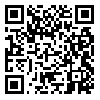Volume 17, Issue 2 (5-2023)
payavard 2023, 17(2): 185-199 |
Back to browse issues page
Ethics code: IR.TUMS.SPH.REC.1401.036
Download citation:
BibTeX | RIS | EndNote | Medlars | ProCite | Reference Manager | RefWorks
Send citation to:



BibTeX | RIS | EndNote | Medlars | ProCite | Reference Manager | RefWorks
Send citation to:
Rafizadeh M, Safdari R, Shoshtarian Malak J, Alizadeh S. Identification of Preliminary Technical Requirements to Design and Develop Augmented Reality Based Educational App. payavard 2023; 17 (2) :185-199
URL: http://payavard.tums.ac.ir/article-1-7363-en.html
URL: http://payavard.tums.ac.ir/article-1-7363-en.html
1- Master of Science in Health Information Technology, School of Allied Medical Sciences, Tehran University of Medical Sciences, Tehran, Iran
2- Professor, Department of Health Information Management, School of Allied Medical Sciences, Tehran University of Medical Sciences, Tehran, Iran
3- Assistant Professor, Department of Digital Health, School of Medicine, Tehran University of Medical Sciences, Tehran, Iran
4- Professor, Department of Laboratory Hematology and Transfusion Sciences, School of Allied Medical Sciences, Tehran University of Medical Sciences, Tehran, Iran ,alizadehs@tums.ac.ir
2- Professor, Department of Health Information Management, School of Allied Medical Sciences, Tehran University of Medical Sciences, Tehran, Iran
3- Assistant Professor, Department of Digital Health, School of Medicine, Tehran University of Medical Sciences, Tehran, Iran
4- Professor, Department of Laboratory Hematology and Transfusion Sciences, School of Allied Medical Sciences, Tehran University of Medical Sciences, Tehran, Iran ,
Abstract: (978 Views)
Background and Aim: Simulation-based Mobile Education is one of the necessities of the new era as well as an escalating field to meet the needs of different educational systems and levels. Considering the increasing application of simulation-based technologies, and the popularity of Augmented Reality (AR) in the field of education, the present research aims to facilitate the initial steps in understanding the technical requirements and software used in developing these types of apps.
Materials and Methods: The data required for this research was collected by searching in library resources to identify the commonly used platform/software in designing and developing AR-based educational apps. At the same time, the included studies’ app features/sections were also extracted, and the total of this information was presented in a table. After indicating the mainly used software in the development of these types of apps, a simple app architecture and a how-to-develop model using the most practical software were illustrated.
Results: “3D Model display” and “multiple-choice questions” were identified as the minimum (basic) features of an AR-based educational app. To identify the most commonly used software in creating AR-based educational apps, articles were reviewed, required information was extracted, and gathered in form of a table. The results of the review showed that Unity 3D and Vuforia have the highest usage statistics in creating these types of apps. Finally, a simple model of the process of developing AR-based educational app and a sample output of this type of app were presented based on this information.
Conclusions: Simulation-based education is one of the prominent and growing topics worldwide. Augmented Reality is one of the most renowned and widely used technologies in this field. The results of this study encompass a set of basic features of an AR-based educational app as well as the software that can be used to create such apps. Therefore, this study can assist researchers interested in this field in navigating the simplest path to developing an AR-based educational app by providing them with an initial technical understanding of AR-based education.
Materials and Methods: The data required for this research was collected by searching in library resources to identify the commonly used platform/software in designing and developing AR-based educational apps. At the same time, the included studies’ app features/sections were also extracted, and the total of this information was presented in a table. After indicating the mainly used software in the development of these types of apps, a simple app architecture and a how-to-develop model using the most practical software were illustrated.
Results: “3D Model display” and “multiple-choice questions” were identified as the minimum (basic) features of an AR-based educational app. To identify the most commonly used software in creating AR-based educational apps, articles were reviewed, required information was extracted, and gathered in form of a table. The results of the review showed that Unity 3D and Vuforia have the highest usage statistics in creating these types of apps. Finally, a simple model of the process of developing AR-based educational app and a sample output of this type of app were presented based on this information.
Conclusions: Simulation-based education is one of the prominent and growing topics worldwide. Augmented Reality is one of the most renowned and widely used technologies in this field. The results of this study encompass a set of basic features of an AR-based educational app as well as the software that can be used to create such apps. Therefore, this study can assist researchers interested in this field in navigating the simplest path to developing an AR-based educational app by providing them with an initial technical understanding of AR-based education.
Send email to the article author
| Rights and permissions | |
 |
This work is licensed under a Creative Commons Attribution-NonCommercial 4.0 International License. |






